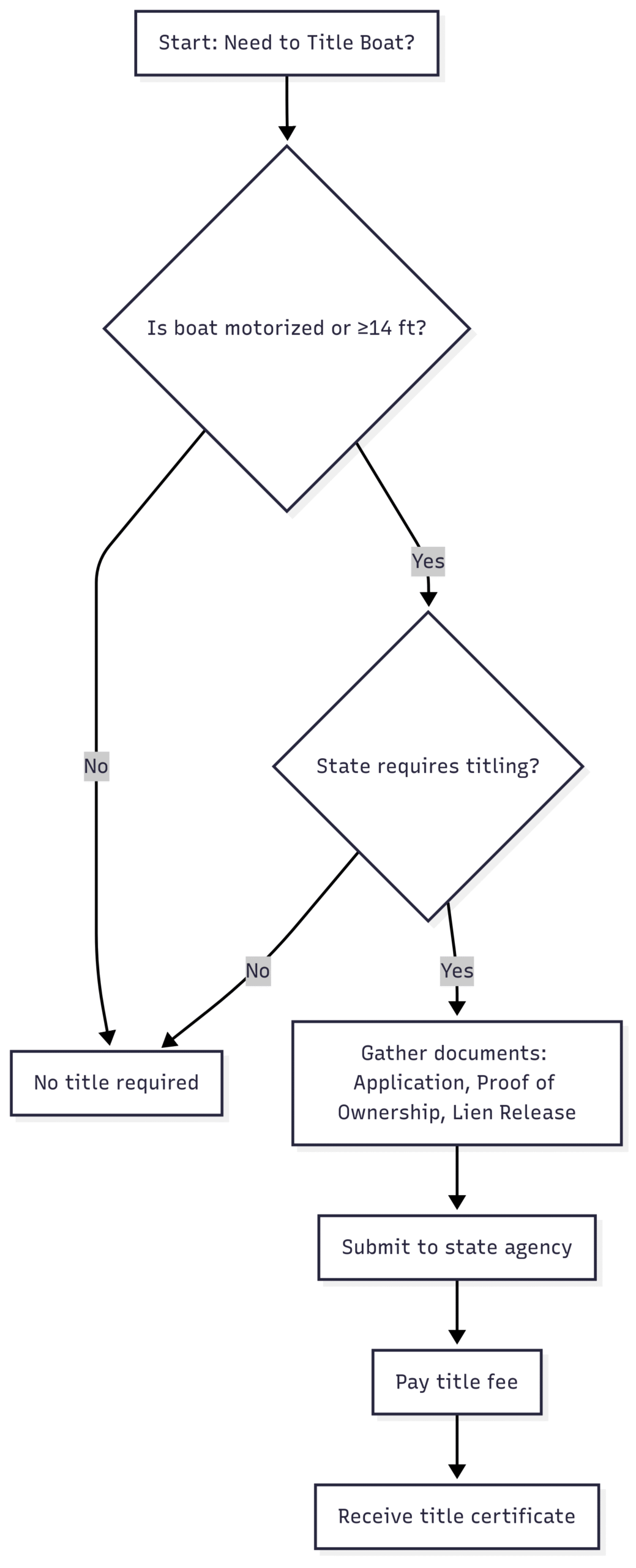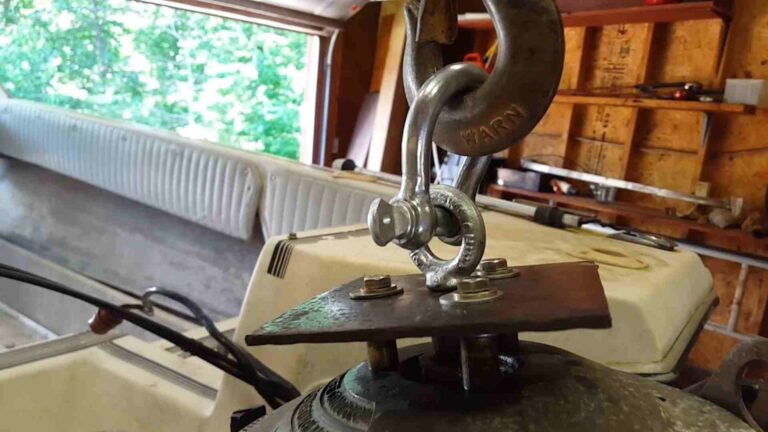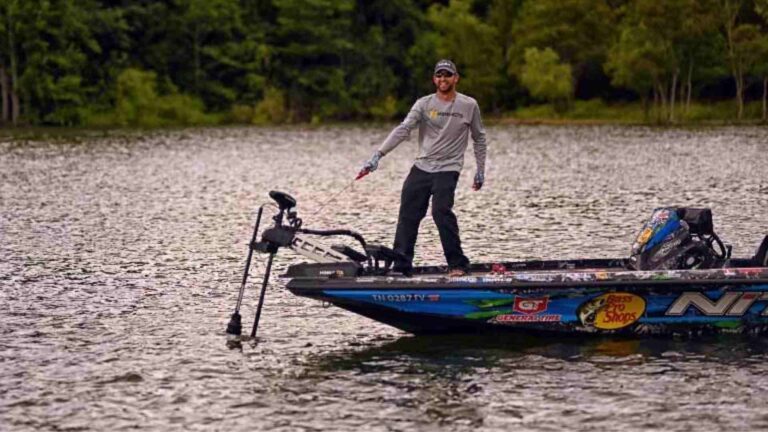Boat Registration and Titles – FAQ
Learn how to register and title your boat with our comprehensive FAQ guide. Covers state-specific requirements, fees, and processes.
Navigating the waters of boat ownership involves more than just setting sail—it requires understanding the legal requirements for registration and titling. Whether you’re a first-time boat owner or a seasoned mariner, complying with state-specific regulations ensures smooth sailing and avoids legal complications. This comprehensive guide answers frequently asked questions about boat registration and titling, with a focus on processes, requirements, fees, and state-specific nuances, particularly in Texas and New York. Designed to be your go-to resource, this article provides clear, actionable steps and includes charts and tables for clarity.
Why Boat Registration and Titling Matter
Boat registration and titling are critical legal processes that establish ownership, ensure compliance with state and federal laws, and promote safety on the water. Registration assigns a unique identification number to your vessel, making it traceable and ensuring it meets safety and environmental standards. Titling, on the other hand, serves as proof of ownership, similar to a car title, and is required for certain boats depending on size, type, and state regulations. Failure to register or title your boat can result in fines, penalties, or restrictions on usage.
This guide covers the essentials of boat registration and titling, addressing common questions about documentation, fees, renewals, transfers, and more. We’ll also explore special cases like out-of-state boats, lien management, and marine licensing for dealers and manufacturers.
Do I Need to Register My Boat?
Boat registration requirements vary by state, but most states mandate registration for motorized vessels and certain non-motorized boats. For example:
- Texas: All motorized vessels, including those with trolling motors, and non-motorized vessels 14 feet or longer (including sailboats) must be registered when used on public waters. Exemptions include non-motorized canoes, kayaks, punts, rowboats, or rubber rafts under 14 feet, USCG-documented commercial vessels, and vessels over 115 feet.
- New York: Boats with any motor (electric or fuel-driven) must be registered, regardless of size. Non-motorized boats are exempt. Exceptions include lifeboats, boats registered in another state (used in New York for less than 90 consecutive days), commercial boats with U.S. or foreign documentation, and boats racing in competitions.
To determine if your boat requires registration, check your state’s Department of Motor Vehicles (DMV), Department of Natural Resources (DNR), or equivalent agency. Most states provide online resources or hotlines for clarification.
Registration Requirements by Vessel Type
| Vessel Type | Texas Registration Requirement | New York Registration Requirement |
|---|---|---|
| Motorized Boats | Required (all lengths) | Required (all sizes) |
| Non-Motorized Boats < 14 ft | Exempt | Exempt |
| Non-Motorized Boats ≥ 14 ft | Required | Exempt |
| USCG-Documented Vessels | Required (non-commercial) | Stickers only, no registration number |
| Commercial Vessels | Exempt (USCG-documented) | Exempt (USCG or foreign-documented) |
How to Register Your Boat
The boat registration process typically involves gathering documentation, completing an application, paying fees, and submitting your materials to the appropriate state agency. Below is a step-by-step guide based on common practices, with details for Texas and New York.
Step 1: Verify Registration Requirements
Confirm whether your boat requires registration based on its type, size, and usage. Check your state’s regulations for exemptions or special conditions, such as temporary use permits for out-of-state boats.
Step 2: Gather Required Documentation
You’ll need the following documents, though requirements vary by state:
- Application Form: Obtain the correct form from your state’s DMV, DNR, or boating agency (e.g., Texas PWD 143 for boats, PWD 144 for outboard motors; New York Form 9400-193).
- Proof of Ownership: This may include a title, bill of sale, Manufacturer’s Statement of Origin (MSO) for new boats, or registration card from another state.
- Proof of Insurance: Required in some states for larger boats or personal watercraft.
- Sales Tax Payment: Proof that sales tax was paid, if applicable.
- Identification: A government-issued photo ID (e.g., driver’s license, passport) or taxpayer ID for businesses/trusts.
- Hull Identification Number (HIN): Provide the boat’s make, model, year, and HIN.
Step 3: Complete the Application
Fill out the application form accurately, including details about the boat (make, model, year, HIN, length) and owner information (name, address, ID number). Incomplete applications can delay processing.
Step 4: Pay Registration Fees
Fees vary by state and depend on factors like boat length and registration duration. Below are examples:
Texas Boat Registration Fees
| Boat Length | Fee |
|---|---|
| Less than 16 feet | $32 |
| 16 feet to less than 26 feet | $53 |
| 26 feet to less than 40 feet | $74 |
| 40 feet or longer | $95 |
New York Boat Registration Fees
| Boat Length | Fee (3-Year Registration) |
|---|---|
| Less than 16 feet | $22.50 |
| 16 feet to less than 26 feet | $45.00 |
| 26 feet or longer | $75.00 |
Additional fees may apply for titling (e.g., $50 in New York for boats meeting titling criteria) or expedited processing.
Step 5: Submit Your Application
Submit your application and documents online, by mail, or in person, depending on state options:
- Texas: Submit to Texas Parks and Wildlife Department (TPWD) Headquarters (4200 Smith School Road, Austin, TX 78744), a TPWD Law Enforcement field office, or a participating County Tax Assessor-Collector office. Online submission is available via the TPWD or Texas Online website.
- New York: Submit online through the DMV or DNR GoWILD system, or mail to the DNR. Documents are mailed back after processing.
Some states, like Texas, may require an in-person boat inspection to verify the HIN.
Step 6: Display Registration Numbers and Stickers
Once approved, you’ll receive registration numbers and validation stickers to display on your boat:
- Texas: Display registration numbers and stickers as specified by state law, and keep the certificate of registration on board.
- New York: Place stickers 18 inches from the bow on both sides of the boat. USCG-documented vessels receive stickers only, without registration numbers.
Step 7: Renew Your Registration
Boat registrations expire periodically (e.g., annually in Texas, every three years in New York). Renewals can typically be completed online, by mail, or in person. In Texas, renewals can start 90 days before expiration, and owners must carry a receipt if operating before new decals arrive.
Boat Titling Requirements
Titling establishes legal ownership and is required for certain boats and outboard motors. Not all states mandate titling, and requirements differ based on vessel characteristics.
Texas Titling Requirements
- Required for: All motorized vessels, non-motorized vessels 14 feet or longer, and all internal combustion outboard motors.
- Exemptions: USCG-documented vessels, non-motorized canoes, kayaks, punts, rowboats, or rubber rafts under 14 feet, and electric outboard motors.
- Process: Submit Form PWD 143 (boat) or PWD 144 (outboard motor), proof of ownership, and fees to TPWD. If a lien exists, a lien release is required.
New York Titling Requirements
- Required for: Boats model year 1987 or newer, at least 14 feet long, and registered in New York.
- Exemptions: Boats not meeting the above criteria or USCG-documented vessels.
- Process: Submit Form 9400-193, proof of ownership (e.g., title, MSO, or registration card), and a $50 title fee, if applicable.
Titling Process Flowchart

Tax Requirements for Boats and Outboard Motors
Boat and outboard motor purchases are subject to sales or use tax, with rates and exemptions varying by state.
Texas Boat and Outboard Motor Tax
- Rate: 6.25% of the sales price for vessels 115 feet or less and internal combustion outboard motors purchased or brought into Texas on or after January 1, 2000.
- Due Date:
- Within 45 working days from the date of sale or entry into Texas (post-September 1, 2019).
- Within 20 working days for purchases before September 1, 2019.
- Exemptions: Canoes, kayaks, rowboats, rafts, punts, and electric outboard motors.
- New Resident Tax: $15 for boats or outboard motors brought into Texas by new residents, unless use tax applies.
- Penalties: Late applications incur tax penalties and interest, per the Texas Comptroller of Public Accounts.
New York Boat Tax
- Rate: Varies by locality (typically 4% state tax plus local taxes, averaging 8–8.875%).
- Due Date: At the time of registration.
- Exemptions: Boats used for commercial purposes or registered in another state (if used in New York for less than 90 days).
Use a state-provided tax calculator to estimate your tax liability. For Texas, contact the Texas Comptroller for refund requests (Form 57-200).
Handling Out-of-State Boats
If your boat is registered or titled in another state, you may use it in Texas or New York for up to 90 consecutive days without transferring registration. However, to permanently register or title in a new state:
Texas
- Requirements: Submit Forms PWD 143 (boat) or PWD 144 (outboard motor), a photo of the HIN/serial number (Form PWD 504), and the out-of-state title or registration card. For non-title states, provide an Affidavit of Fact (Form PWD 314).
- Deadline: Transfer within 90 days and pay use tax or new resident tax within 45 working days.
- Temporary Use Permit: Obtain a 90-day non-renewable permit ($150 per vessel/motor) to delay tax payment.
New York
- Requirements: Submit Form 9400-193, the out-of-state title or registration card, and proof of lien release, if applicable. For new boats, provide the MSO.
- Deadline: Register and title at the time of application, with tax due at registration.
Transferring Boat Ownership
Transferring ownership involves both the seller and buyer completing specific steps to ensure a legal transfer.
Texas Ownership Transfer
- Seller: Complete the tax affidavit on Forms PWD 143/144, provide the signed title or MSO, and notify TPWD of the sale (Form PWD 1340 or online).
- Buyer: Submit Forms PWD 143/144, a photo of the HIN/serial number (Form PWD 504), the assigned title, a bill of sale, fees, and tax within 45 days.
- Note: Do not purchase a used boat without an original, properly assigned title and bill of sale.
New York Ownership Transfer
- Seller: Provide the signed Certificate of Title or registration card. If the title lists multiple owners with “and,” all must sign; with “or,” any owner can sign.
- Buyer: Submit Form 9400-193, the assigned title or registration card, a lien release (if applicable), and fees.
Replacing Lost or Destroyed Documents
Lost or destroyed titles, registration decals, or Certificates of Number can be replaced with the appropriate forms and fees.
Texas
- Title Replacement: Submit Form PWD 143M (boat) or PWD 144M (outboard motor) with fees ($27 standard, $64 quick title). If a lien exists, include a lien release (Form PWD 403).
- Decal/ID Card Replacement: Submit Form PWD 143M or replace online via TPWD. Fees vary ($11–$13).
- Processing: Standard titles print in 21 days; quick titles in 1 day. All are mailed via USPS.
New York
- Title Replacement: Submit Form 9400-618 with a $5 fee. Titles are mailed to the primary owner.
- Decal/ID Card Replacement: Submit Form 9400-622 or replace online via the DNR GoWILD system.
Updating Owner and Lien Information
Texas
- Address Change: Update online or submit Form PWD 143M or a written request to TPWD. No fee unless requesting a new Certificate of Number ($11).
- Lien Release: If a lien is paid off but still listed, submit Form PWD 403 with a signed lien release and fees to obtain a new title.
- Owner/Lienholder Info: Request ownership information online or via Form PWD 763. History requests (10-year record) also use Form PWD 763.
New York
- Address Change: Update via the DNR GoWILD account or email the DNR with your customer ID, name, old/new address, and contact details.
- Lien Release: Submit a lien release with Form 9400-623 to add/remove a lien or update ownership.
Boat Trailer Registration
Boat trailers are handled separately from boats and are typically registered through the state’s DMV or County Tax Assessor-Collector office, not the boating agency. In Texas, contact your local County Tax office; in New York, visit a DMV office.
Marine Dealer, Distributor, or Manufacturer Licensing
For businesses involved in selling, distributing, or manufacturing boats or outboard motors, a marine license is required.
Texas Marine Licensing
- Dealer Requirements: Operate from a permanent business location with a visible sign, office, service area, and product display space. Submit Form PWD 310, photos of the business, sales tax permit, dealer agreements, a driver’s license copy, and a $500 fee.
- Distributor/Manufacturer Requirements: Submit Form PWD 310, a list of dealers/distributors, verification of assumed names (if applicable), and a $500 fee.
- Renewal/Transfer/Update: Use Form PWD 310 with fees ($500 for renewal/transfer to new owner, $11 for location transfer, $4 for updates). Include relevant documents (e.g., sales tax permit, dealer agreements).
- Validation Card/Decal Replacement: Submit Form PWD 310 with a $27 fee.
Boating Safety Certificate Requirements
In New York, all motorboat operators will need a Boating Safety Certificate starting in 2025, regardless of age. The phase-in schedule is:
| Born On or After | Certificate Required By |
|---|---|
| January 1, 1983 | 2023 |
| January 1, 1978 | 2024 |
| All Operators | 2025 |
Visit the New York State Parks website for approved courses.
Key Forms for Boat Registration and Titling
Texas Forms
| Form | Purpose | Fee |
|---|---|---|
| PWD 143 | Boat registration/titling application | Varies |
| PWD 144 | Outboard motor titling application | Varies |
| PWD 143M | Replace lost title, decals, or ID card | $11–$64 |
| PWD 144M | Replace lost outboard motor title | $11–$64 |
| PWD 403 | Request to release a lien | Included in title fee |
| PWD 504 | Photo of HIN/serial number | None |
| PWD 1340 | Ownership transfer notification | None |
| PWD 310 | Marine dealer/distributor/manufacturer license | $4–$500 |
New York Forms
| Form | Purpose | Fee |
|---|---|---|
| 9400-193 | Boat registration/titling application | $22.50–$75 |
| 9400-622 | Registration renewal/replacement materials | Varies |
| 9400-618 | Title replacement request | $5 |
| 9400-623 | Add/remove owner or lien | Varies |
Tips for Smooth Registration and Titling
- Check State Regulations: Always verify requirements with your state’s boating agency (e.g., TPWD, New York DMV/DNR).
- Keep Documents Organized: Retain copies of all forms, receipts, and titles.
- Act Promptly: Meet deadlines for tax payments and ownership transfers to avoid penalties.
- Use Online Services: Many states offer online submission for faster processing.
- Contact Support: For Texas, call the Boat Information Hotline at 800-262-8755; for New York, use the DNR GoWILD system or DMV resources.
Conclusion
Boat registration and titling are essential for legal ownership and operation on public waters. By understanding your state’s requirements, gathering the right documents, and following the outlined processes, you can ensure compliance and enjoy your boating adventures worry-free. Whether you’re registering a new vessel, transferring ownership, or updating records, this guide provides the clarity and tools needed to navigate the process effectively. For additional assistance, contact your state’s boating agency or visit their official website.
Happy Boating!
Share Boat Registration and Titles – FAQ with your friends and leave a comment below with your thoughts.
Read Swimming Around Boats: 10 Safety Tips Guide until we meet in the next article.






